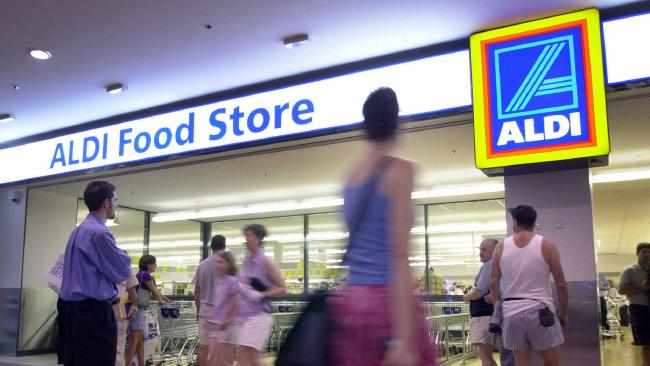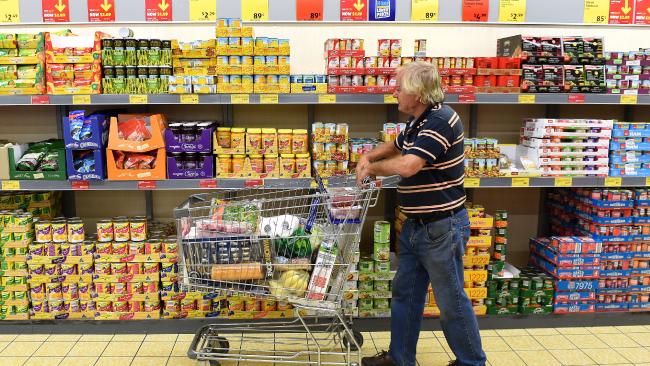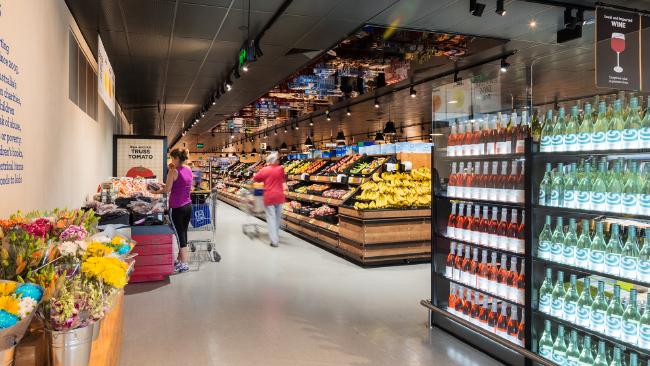ALDI Australia today released the results of its new ‘Household Expenditure Report’, with research conducted by Deloitte Access Economics, which reinforces popular commentary that Australian households are feeling the pinch now more than ever.
Despite 2017 being the ‘year of the millionaire1’, 37 per cent of Aussie households are concerned about their ability to pay for expenses, including bills and household costs, which is up from 31 per cent two years ago. This is expected to increase to 40 per cent by 2019.
These are some of the findings from ALDI’s Household Expenditure Report2, which uncovers consumers’ spending patterns and consumption trends. The research combines macroeconomic analysis of spending and retail trends with a nationally representative survey of over 1,000 Aussie households.
Commenting on the report, Tom Daunt, Chief Executive Officer, ALDI Australia, said: “We engaged Deloitte Access Economics to better understand how our customers live and what they value. This research helps to shape our opinions on our future product development and ensures we are consistently responding and adapting to changing consumer behaviour.”
The research reveals three key trends, the emergence of ‘value’ driving behavior over price, a clear reduction in product based brand loyalty and the preferencing of ‘little luxuries’ over core essentials such as groceries. Little luxuries include non- essential utility items such as music streaming and entertainment subscription services.
As household budget pressure increases, ALDI’s focus remains on providing the customer with the best value products in the market. “The growth ALDI has seen in the last 18 months correlates with a shift in behaviour in customer spending and this plays into our business model. Our pricing strategy has been consistent since day one- to provide customers with quality products at lowest prices. This strategy has led us to reducing the price on over 500 products this year alone, without having to pressure suppliers. As we improve our processes and operations, we invest the saving in lower prices for our customers, said Mr Daunt.”
Supermarket Pricing
Risings costs, combined with lifestyle changes, are shifting consumer behavior in various ways. Over the last 12 months, one in four Australians (25 per cent) has switched the grocery store at which they shop most frequently- with value for money being the primary driver (44 per cent). This is a significant increase from when ALDI Australia last conducted research into consumer behaviour in 2015, which found that the price of groceries was the only driver for switching supermarkets for 31% of shoppers3.
“We’ve invested a huge amount to keep our prices the lowest in the sector so people continue to choose ALDI as their main shopping destination. Our lowest price leadership and the quality of our products is the contract we have with our customers. As we continue to grow this won’t change.”
- For the first time the average Australian household has more than $1 million in net wealth. This means that for every household in the country, there is an average of more than $1 million in cash and financial assets
- https://corporate.aldi.com.au/en/media-centre/press-releases/
- ALDI Grocery Wallet Research, conducted by Galaxy Research November 2015
Media Release
“Last year alone we cut the price of more than 30% of our everyday grocery items. Price cuts achieved via business efficiency, not pressure on suppliers. In the last 16 years, we’ve grown exponentially and subsequently we’ve shared this growth with many business partners. We’ve impacted traditional retail strategy in Australia and ultimately improved the offering and prices available for Australians”, said Mr Daunt.
The decline of brands
Rising costs are also causing a decline in the importance of brands, with 15 per cent of Australians saying they would switch to private label products to save money if day-to-day expenses increase. This is reflective of wider trends, with Nielsen figures showing that the private label product category has grown by 4.3 per cent in 2016 (60 per cent faster than brands), now equating to 24 per cent of total grocery sales4. Canstar Blue likewise found that 76 per cent of shoppers now believe private label brands are good quality5.
“ALDI’s exclusive brands are not like traditional private label products. We benchmark the quality of our exclusive brands against known brands, and in many cases we believe that our product quality is superior. Today, we have more than 400 award-winning products available in-store. We’ve worked very hard to break the stigma around ‘private label’ and we are proud of the unique quality perception we have developed in Australia.” Mr Daunt said.
From luxury to essential: The new necessities
The report shows that broader spending patterns are also changing, with many new categories rapidly moving from luxury to necessity for many. Entertainment subscription services are one such example: Netflix was only introduced to Australia in 2015, yet today 39 per cent of Australians subscribe to entertainment on-demand services. Spending patterns on food are also changing: over the year to February 2017, online spending on takeaway food has grown by around 30 per cent6, as consumers are increasingly favouring delivery food services or take away from restaurants.
For some, these new services have become so essential that they would rather cut back their grocery spend and other essentials than on ‘little luxuries’. Of those that subscribe to entertainment services like Netflix or Spotify, more people would first prefer to cut back on car, clothing, holiday (20%) or grocery spending (12%) than sacrifice their subscriptions (4%).
“We know that to remain on top we need to continue to expand our range into categories that meet the evolving tastes and preferences of our customers. We have expanded products in the categories of health, premium, organic and meat and our national store refurbishment have allowed for greater space to accommodate these categories, improve store standards and service. We’ve also identified from our customers that availability of fresh fruit, vegetables and meat are more important than ever. We continue to invest heavily in these categories so our customers can get products of comparable quality to the leading brands at prices that are significantly cheaper than any of our competitors.”
“More and more Australians are doing their main shop at ALDI and this gives us the confidence to invest in more stores. But don’t think differently about us because we are growing. We will always maintain our position as the lowest price leader and we remain dedicated to driving down costs to provide Australians with a richer life for less. There is no need to sacrifice on the little luxuries,” added Mr Daunt.
- Nielsen Homescan 13Wks to 1/07/17 vs 13wks 2/7/16
- Canstar Blue Research, 2016: https://www.canstarblue.com.au/food-drink/stores/supermarkets/private-labels-vs-brand-names/
- NAB Online Retail Sales Index: In-depth Report – March 2017. Retrieved from https://business.nab.com.au/wp-content/uploads/2017/05/norsi-march-2017.pdf
Media Release



